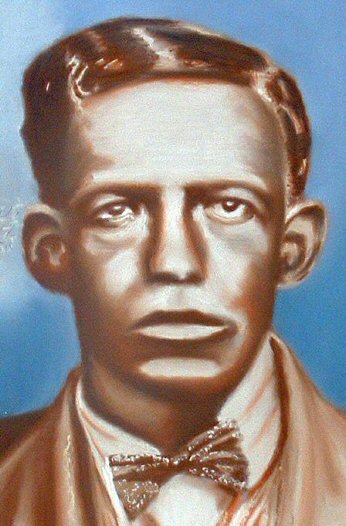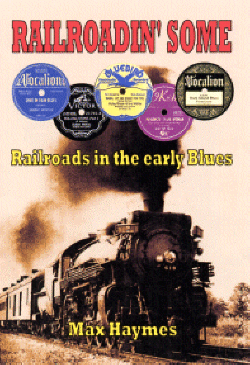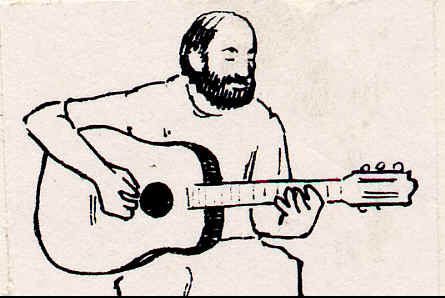
Painting © 2004 Loz
Arkle
Website
© Copyright 2000-2011 Alan White - All
Rights Reserved
Site optimised for Microsoft Internet Explorer



The English Music Hall Connection |
||||||||||||||||||||||||||||||||||||||||||||||||||||||||||||||||||||||||||||
|
Since I completed my Dissertation on The English Music Hall Connection in 1992, inevitably, fresh information has come to light which often requires an alteration/addition or otherwise correction to parts of the text. This is of course a hazard for all works of non-fiction. The main part of this addendum concerns the correction of my caption to Fig. 3 (Ch. II) From Bermondsey To The Deep South regarding the US Victor catalogue from 1903. My caption in 1992 reads "Only Bert Williams is a black artist." (l) But under the entry 'George W, Johnson, the Whistling Coon' in the second column of the ad. are listed four titles. It transpires this is also a black artist. An indispensable book featuring an in-depth survey of the beginnings of black recordings in the US Lost Sounds has thrown up some startling new facts with regard to the first African American to record-which just happens to be the above George W. Johnson! Johnson was a 19th. Century street singer from Virginia who later moved to New York, and I quote from author Tim Brooks' Introduction, at some length. "The first black to make records for commercial sale appears to have been a middleaged panhandler from the streets of New York City. Jovial street musician George W. Johnson became one of the best known and most successful recording artists of his time, producing two of the biggest selling records of the entire decade of the 1890s. While many aspects of this era are shrouded in obscurity, Johnson's first recordings can be dated with some precision. Entries in the ledgers of the Metropolitan Phonograph Company of New York document that his cylinders were being sold by them in May 1890. They do not appear in a c. January 1890 catalog issued by the company, so he presumably began recording between January and May. By the summer of 1890 his cylinders were already quite popular, leading to a long and successful career in front of the recording horn. It is possible that someone obscure and unknown preceded him, but for now we will assume he was the first." (2) It is fitting (?) that George Johnson was probably born in "Loudoun County near the northeastern tip of Virginia" (3) at "Wheatland... a tiny crossroads". (4) His full name being George Washington Johnson and Brooks estimates that he "was most probably born in... October 1846.". (5) So like Charley Patton, he was a man in his forties when he commenced recording! Also like Patton, the author adds "Neither the place nor the exact date of birth may ever be known with certainty.". (6) It appears that Johnson moved north to New York City in either 1873 or 1876 and "makes a living by whistling in the streets. His notes are as perfect, it is said, as that of a flute". Another report concurs and noted "when not regularly employed, Johnson makes a living by whistling in the streets.". (7) He also sang and employed the laugh on his many recordings - at his initial session he made at least 80 titles! This paid him $4 or $5 and in 1890 "That was a week's work for a lot of people". (8) His initial titles included two of his most popular: The Whistling Coon and The Laughing Song. Accompanied by a pianist, who was probably white; and while The Whistling Coon was a "stage song' The Laughing Song was probably Johnson's own composition. As Brooks says: "... Johnson's performance sounded authentic, just like the black panhandler on the street. This was far more unusual than it might seem, for in the early days of recording most artists sang in distinct, stilted, almost shouted tones, striving above all else to make the words very clear and understandable. When they imitated blacks, in sketches and song, they were so broad and mannered as to be almost cartoonish. But here was the real thing, a black street singer doing just what he did for nickels on the sidewalks of New York... Johnson slurred the phrases, used broad a's [sic] and dropped his g's [sic] to great effect: 'As I wuz comin' roun' the corner, I... heard some people saay/Here comes-a dandy daarkey, here 'e comes this waay... "' (9) Brooks also writes: "The British comedian Charlie Penrose used the melody to The Laughing Coon for his routine called The Laughing Policeman, which he recorded several times in the 1920s and 1930s, but few of his listeners probably knew where the tune came from." (10) Actually, (as more of an addendum for Tim Brooks!) Charles Penrose "had recorded a string of laughing records as early as 1911, some under the pseudonym 'Mr. Harry Happy'. But his best remembered song comes from a later session in 1922, entitled The Laughing Policeman. Penrose went on to re-record Policeman along with many sequels up to as late as 1933". (11) But the laughing feature in a song "goes back to the earlier days of English music hall, as Newton illustrates when discussing a popular comic from the 1860's, Jolly Nash. [Newton wrote] "'Nash having cultivated a most infectious laugh - or series of chuckles - became known as the Laughing Comic', (12) and some of his ditties lasted for years. [Newton continued] `They included I Couldn't help laughing, it tickled me so!, The Little Fat Grey Man, and Ho! Ho! Ho! He! He! He! "' (13) So the question arises did George W. Johnson ever get to hear Jolly Nash live and adapt one or more of the latter's songs? Although no recordings are listed by Brian Rust for The Laughing Comic, he had been treading the music hall boards for some 25 years prior to Johnson's recording debut and being something of a celebrity might well have traveled to the U.S.A. along with Vesta Victoria, Alice Lloyd, etc. 'It should also be noted that music hall via promoter Tony Astor had been introduced to New York City in the same decade that George W. Johnson moved to the `Big Apple' in the 1870s. (14) See also English Music Hall (ibid. p.25) re the laugh featured on some early blues recordings. Hope Chance Newton was an earlier English Music Hall "performer and correspondent". (15)
References
_________________________________________________________________________ |
||||||||||||||||||||||||||||||||||||||||||||||||||||||||||||||||||||||||||||
Website © Copyright 2001-2008 Alan White. All Rights Reserved.
Text (this page) © Copyright 1992 Max Haymes. All Rights Reserved.
For further information please email:
alan.white@earlyblues.com




